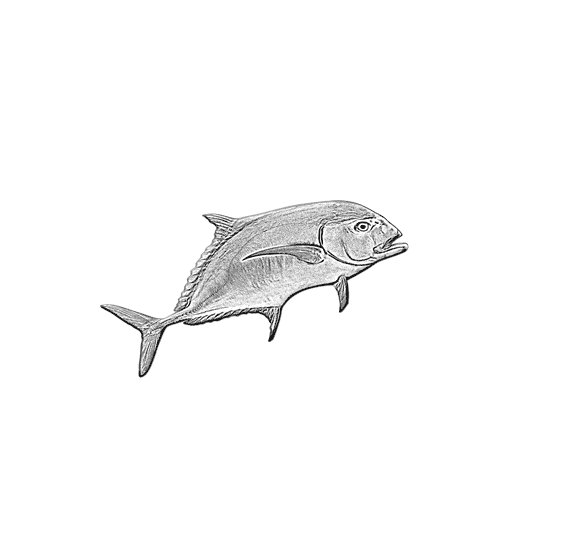
How to Catch Carp
Tips on How to Catch Carp for Beginners
Having trouble getting those carp to bite? Carp fishing is known to put even the most experienced fishermen to the test, but with these easy yet efficient tips, you’ll be able to catch carp like the pros in no time!
Unless you lived in the United Kingdom or Central Europe, catching carp was frowned upon for decades, as carp were thought of as a “trash fish”.
However, the times have changed.
Many people consider carp fishing to be a beloved activity; others even compare it to a cult. Anglers fantasize of catching a large carp weighing 40, 50, or even 60 pounds! Monster-size fish are unusual and in short supply, which is part of what makes them so appealing.
You’re not alone if you’re wondering how to catch carp. More and more anglers from the United States are participating in the fun. They enjoy the challenge of catching large carp as well as the competitiveness. They also enjoy spending time outside in nature.
It’s not difficult to learn how to catch carp.
This is a wonderful place to start if you’re new to fishing. We’ll start with some basic information before diving into some expert advice from fisherman. You’ll know how to catch carp like a pro by the time we’re done.
A Brief History of Carp:
Carp, or Cyprinus Carpio as scientists refer to them, are a type of freshwater fish that may be found in most rivers and lakes in the United States. Settlers brought them to the United States as a food source, but today only a few Americans consume them.
Perhaps this is why carp fishing is such a popular sport! Fisherman have become addicted to the challenge of catching carp, which can be found in plenty.
The US government made certain that there were plenty of these fish throughout the country. In the late 1800s, they carried out a large restocking operation. By introducing common carp, the government hoped to replenish declining native fish populations. In some aspects, the initiative was a big success. Carp are here to stay, even if the native fish population never recovers.
Carp is a mainstay in certain American towns, despite the fact that many chefs and culinary professionals refuse to serve it on a dinner plate. Carp is revered in some regions of the world.
Carp is known in Japan as koi, and the fish are closely associated with the country’s identity. Carp is commonly served in Germany. This is carp that has been cooked in wine and vinegar till the skin has turned blue. And in Eastern Europe, carp is served as a Christmas supper!
Carp fishing, whether you eat it or not, is a fun experience. These fish are powerful, fast, and cautious, making them difficult to catch. They normally weigh 10-15 pounds and grow to be 30-inches long, making them ideal for beginning fisherman.
Even though they fight hard, and are strong, a youngster or adolescent can generally catch a smaller one. For many people, catching carp is their first taste of fishing, but it is rarely their last.
There are, of course, some river monsters out there. In 2019, an angler in Thailand caught a 232-pound carp. The enormous beast took eighty minutes to catch!
Although you won’t find a carp that enormous in the United States, freshwater behemoths abound in North America. Anglers estimate that there are carp in American rivers that weigh up to 60 pounds! Getting a hold of one of those would surely be a triumph!
Carp Gear:
You don’t need much as a beginner carp angler. With very little on hand, you can catch a carp. Larger specimens necessitate more extensive equipment, although even that is simple to obtain.
You’ll need a fairly sturdy rod, 6-10lb line, and size 10-20 carp match hooks for smaller carp in the 10-pound range.
You’ll need more durable gear for carp above twenty pounds. Try a 3 to 3.5 pound test-curve carp rod and 10-15 pound lines. A 3 lb test-curve rod merely means that it is extremely stiff; three pounds of weight would be required to bring the rod tip to a 90-degree angle.
If you’re trying for a bigger catch, you’ll also need a stronger hook. Carp hooks in the size range of 4 to 10 are ideal.
If you’re fishing in an authorized catch-and-release location, you’ll also need a net. A 42-inch carp net will easily accommodate a 10-pound carp. If a 20-pound carp is caught, it can be handled, but anything greater will require a larger net.
You’ll also require an unhooking pad or a cradle. A cradle can lift your catch off the ground, making it easier to unhook and photograph while minimizing damage to the fish.
Finally, a floating sling is a viable option. It will allow you to keep the carp in the water safely while you prepare your camera and unhooking tools.
Of course, if you’re just getting started, there’s no need to go overboard with equipment. To get started, all you’ll need is a sturdy rod, 10lb line, a few carp hooks, and some bait.
Carp-Catching Tips for Beginners:
Now that you’ve learned about the necessary equipment, it’s time to concentrate on getting a carp. Carp can be tricky to catch, and they always put up a fight. However, with a little practice and these carp fishing techniques, you’ll be catching 10-20 pound fish in no time.
You could easily catch a 30-pound carp or larger with a bit more expertise and better equipment! If it gets too simple, there are always more difficult locations and strategies to consider. This is a sport that develops as your abilities improve.
But, before we go too far ahead of ourselves, let’s go over some basic guidelines. We’ll start with how to locate the carp before moving on to how to catch them.
1. Location
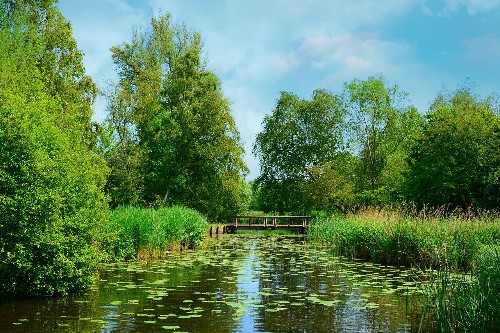
When it comes to catching carp, location is everything. Warm, muddy water is ideal for carp. They prefer to swim in both shallow and deeper depths, ranging from 1 to 30 feet deep, and avoid clear areas as much as possible.
Look for them in inlets where warmer water from a feeder river or stream enters a lake. Shorelines, muddy canals, and backwaters are all good places to look.
Carp prefer to hide and eat insects found in river weeds. As a result, any location with mud and foliage is ideal for carp fishing.
Larger carp may be found on shelves or in drop-offs. These are regions with an abrupt and steep change in depth near warmer, shallow water. Carp, particularly larger ones, prefer to congregate in those regions. It keeps them close to the warm water they like while also providing them with extra protection from predators.
2. Keep an Eye Out for Open Areas.
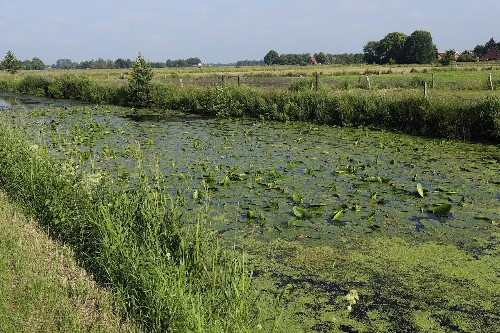
Look for clear patches among the river weeds and stones if you’ve found a muddy, overgrown area that appears carp-friendly. Carp may be feeding in clear spaces in otherwise densely overgrown areas.
3. Seasons
Carp are easier to catch in the summer, although they can be caught at any time of year. Because of the colder temperatures, their metabolism slows down in the winter. As a result, they won’t have to consume as much and will be less tempted by your bait.
Their metabolism speeds up in the summer when the temperature rises. They become hungrier and easier to catch as a result.
4. Plan Ahead

Going out at first or last light is the best time to catch carp. Carp eat in the mornings, evenings, and also at all times of the night.
You might even witness carp jumping as the sun rises and sets. Sediment from the riverbed enters the gills of carp as they feed. To get rid of it, they’ll have to jump. As a result, carp jumping is common in the early morning and late nights.
5. Bait with Sweet Corn or Bread
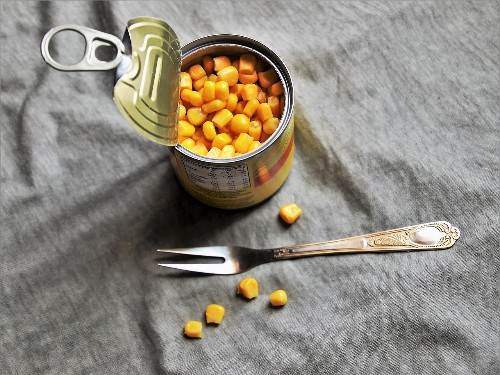
You might be wondering what bait to use for carp once you’ve found them. Carp are omnivores who consume everything from reeds in the river to plankton. Crayfish are even eaten by some of the larger kinds!
You’ll need something they can’t resist to catch a carp. After all, carp are finicky eaters. Sweet corn appears to work well and is inexpensive. The canned variety performs admirably.
Stale bread can also be used; simply roll it up to make it sink.
6. Stick with the Ducks
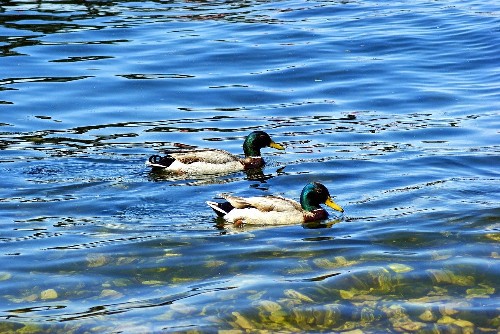
Carps are scavengers who know where to look for a free meal. It’s conceivable that carp are nearby if you see ducks feeding beside a river or lake. Carp consume the same things as ducks, even old bread thrown at them by humans.
7. Listen
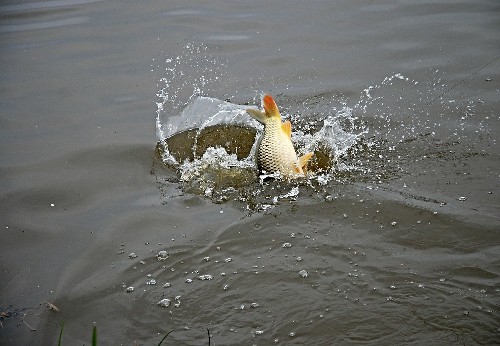
You can always use your ears if you can’t find carp any other way. Carp are notorious for “crashing out,” which is when they take a huge leap and then make a loud splash when the sun sets.
You might miss the carp jumping since they’re so fast. The splash, on the other hand, is nearly certain to be heard. Carp are most likely feeding in the area where the sound came from, making it an ideal spot to catch a carp.
8. Boilies

Boilies are paste fishing baits that typically contain fishmeal. Carp eat fishmeal like kittens eat catnip. Some report that carp can’t get enough of it.
Here’s the deal: If other anglers in the area have been using boilies, the local carp may have learned to shun them entirely. So, go ahead and try boilies, but don’t be surprised if they don’t work out. It’s possible that sweet corn or bread would be a better choice.
9. Select the Proper Rod and Reel
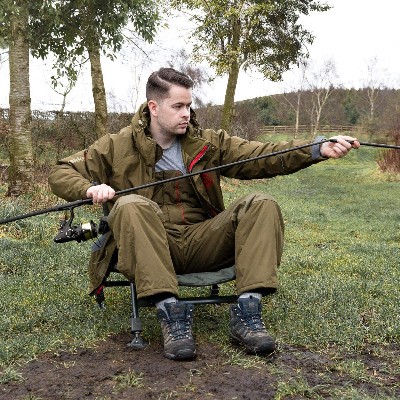
Carp fishing is simple. You can catch a carp right from the river bank with a size eight hook, a 10lb line, and a decently stiff rod.
Simply cast with a few corn kernels or a balled-up scrap of bread on the hook. Maintain a bit slack, so the fish has some give when biting. But be prepared once you’ve caught one! Carp can put up a strong fight!
If you’re a little more experienced or want to step up your game as a fisherman, a bait runner reel is a good option. Dual drag systems are ideal for capturing carp on bait runner reels.
There are two drag settings in a dual drag system. Once the fish hooks are on, the angler can leave the initial setting loose to allow the line to free spool. When they take up the rod and start reeling in their catch, they can tighten the second setting.
It is not required to use a bait runner reel with a dual drag system to catch a carp, but it does make things easier.
10. Try a Rod Holder

Carp are extremely picky feeders and are readily startled. Even the tiniest disturbance in your line could send them fleeing.
You don’t have to hold your rod steady since a rod holder does it for you. It also retains your rod at the proper angle so that if something bites, it unspools neatly. You might even set up additional poles on the same trip to increase your chances of catching a fish.
11. Experiment with a Hair Rig

The hair rig is one of the greatest techniques to catch a carp, according to the American Carp Society. It improves hook-up rates while lowering the number of fish caught on foul hooks. It’s also simple to tie.
A hair rig permits your bait to move independently of your hook, preventing spooking by the carp. If you throw in a few sweet corn kernels, you’ve got yourself a carp-catching machine.
12. Chum
Chumming is a fantastic approach to catch carp if local regulations allow it. Chumming entails tossing a few handfuls of food onto the water’s surface. It should draw fish to your location. After a short wait, you can cast your line in the hopes of getting a bite.
It’s crucial to know that full fish won’t bite at your bait if you’re going to chum. In other words, don’t put out too much chum; it’s meant to be a starter. So that your sweet corn or bread remains appealing to the fish, leave them wanting more.
13. Stay Away from Shiny Objects
Although there are a few religious stories about carp and coins, these fish generally avoid flashy objects. They have excellent underwater vision and regard silver items as a possible threat.
A gleaming fish hook, on the other hand, may hinder you from catching a carp. Use a hook that is camouflaged or dark in color; there are numerous made specifically for carp fishing.
Taking your Carp Fishing to the Next Level:
After you’ve mastered catching carp from the bank of a river or in the shallows of a lake, you might want to try something a little more difficult. Many anglers prefer to experiment with new techniques that raise the challenge level.
You may try fly-fishing, which has its own set of skills to master. Fly-fishing for carp may seem unusual, but it’s getting more popular. However, you’ll need to grasp the drag-and-drop method, which might be challenging. To imitate a fleeing crayfish or minnow, you’ll draw your fly away from the carp and then let it sink.
It’s a difficult technique that only a few fisherman claim to have mastered. However, getting it down gives you bragging rights, and you’ll almost certainly catch a few river monsters!
You might also attempt bow fishing, which is using a bow and arrow to hunt for fish. It takes time to master a method like this, but it’s a rewarding hobby that doesn’t require any prior expertise as a typical angler. It’s not the most efficient method of catching carp, but it could be one of the most enjoyable.
Conclusion:
You’re guaranteed to catch a big carp if you follow these carp fishing instructions. And you should be proud of it, whether it’s five pounds or fifty. Carp fishing is uncomplicated, but that doesn’t imply it’s easy.
Carp are fast and smart. They know what to avoid, and whether it’s a shiny hook or a boilie. They’re wary fish who hide in murky water where they can’t be easily seen.
This makes it more fun to catch one. They may not be the finest eating, but they do provide interesting entertainment.
That is why carp fishing is so rewarding. Carp fishing is a hobby that you can enjoy whether you are a kid, or getting up there in age.
See also 8 common fishing mistakes .
